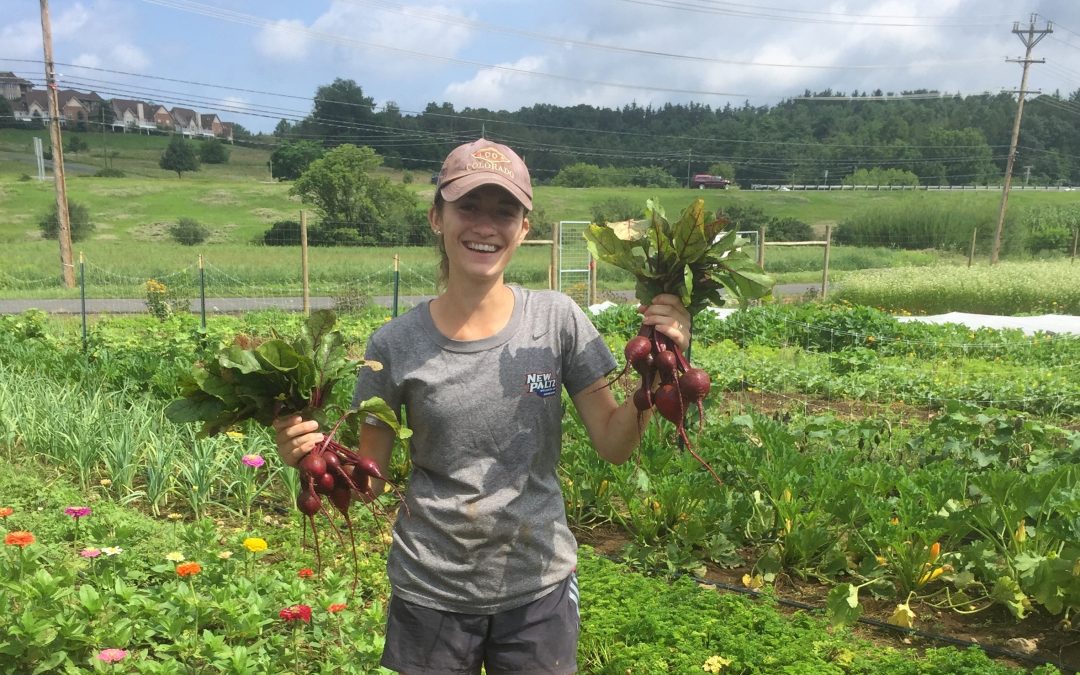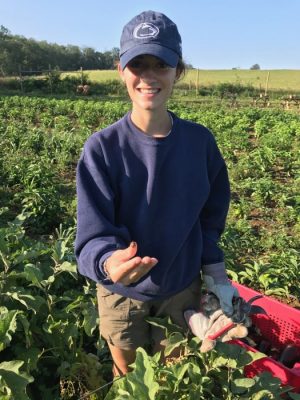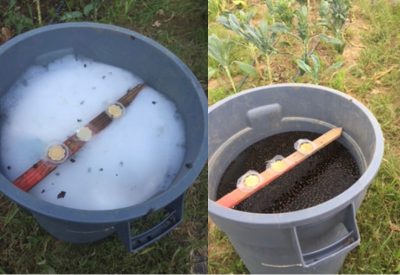By: Haley Stauffer, junior, BioRenewable Systems, International Agriculture, Spanish
As an intern on the Student Farm during the summer 2017 season, I have experienced a collection of challenges and rewards that present themselves when implementing an organic system to a vegetable farm. In order to generate a sustainable and highly productive network, issues of labor, maintenance, and pest management are of the utmost importance.
Various organic pest management tactics have been explored on the Student Farm and continue to be researched. Nuisances on the farm include, but are not limited to: groundhogs, Japanese beetles, Colorado beetles, flea beetles, and the relentless tomato hornworm caterpillars.
Attempts to mitigate the detrimental effects of persistent mammal pests involve placing traps, or filling in their holes as necessary. With regards to insect pests, students have planted flower beds around the established rows to deter the bug population. Furthermore, bags filled with soapy water and lures for the insects are placed within the planted rows. These practices, although organic, must constantly be monitored and managed thoroughly in order to initiate optimal results. Often times, organic methods of pest management require significant labor and upkeep to maintain effectiveness. Revisals to organic pest management practices must be adhered to and modified for the specific needs of the farm based on its location and abundance of a pest.

One of the beautiful flower beds planted on the farm to help lower the bug population. Photo: Carissa Heine
For example, an alteration to the lure tactic, which had previously been to place an insect lure in a bag of soapy water to attract and drown the Japanese beetles, is now to place the lures on top of a large bin. These bins are filled with soapy water and placed at the beginning of a row in an effort to collect a greater number of beetles. This has seemed to prove more efficient for the resources and needs of the Student Farm, however, the concept of insect lures in general is controversial as it has the ability to draw insects from surrounding areas to the farmed plants, thus increasing the overall insect community on the farm.
Improvements to current pest management techniques involve growing nematodes by feeding them mealworms and then injecting them into the soil to eat the abundant beetle larvae. Another strategy to mitigate pest abundance on crops is to introduce a biological control. With the tomato plants, a predator, or the braconid wasp, can be introduced that will lay eggs on the hornworm caterpillar and the parasitic larvae will kill the hornworm. Issues with this method include the inability to remove the braconid wasp after it has been brought to the farm.
Integrated organic pest management tactics are highly significant and imperative to the overall health of a farm. At the Student Farm, further practices must be researched and implemented to establish lasting success.



